What is Jeera Rice
What you may know as cumin seeds are also known as jeera in Hindi. That’s how this famous rice dish gets its name! Whether you call it jeera rice or cumin rice, this is an aromatic rice dish which is lightly spiced with fragrant spices and has the earthy flavors of cumin. Jeera rice is also one of the most popular Indian restaurant dishes; many people prefer to have jeera rice instead of plain basmati to go along with dals or curry dishes. The tempering of cumin and fragrant whole spices takes the simple rice dish to a whole new level. Making jeera rice is easy! It tastes special enough for treasured guests, but is easy enough for weeknight cooking. Learn how to make this traditional Indian side dish immediately – your everyday meals will thank you!
About Cumin Rice Recipe
This jeera rice recipe tastes like it came from your favorite restaurant; it is mildly spiced, fragrant and tastes too good with the earthy flavor of cumin and warming whole spices. In this method, the rice grains are cooked first with whole spices. Then a tadka of tempered cumin and green chillies is added to the cooked rice and mixed. This method of making jeera rice is used in most restaurants. Optionally, the rice can be cooked with some saffron strands to add some color and warming flavor. This method is also useful if you have some leftover cooked rice that you want to dress up. If using leftover cooked rice, simply scale the ingredients accordingly depending upon the quantity of rice.
How to make Jeera Rice
Cook Rice
- Rinse 1 cup basmati rice under cool water till the water runs clear of starch. Then soak the rice for 20 to 30 minutes in enough water to cover the grains. Drain all the water and keep the soaked rice aside.
- Heat 4 cups water and bring it to a boil. Add all the whole spices listed below:
1 tej patta (Indian bay leaf) 2 green cardamoms1 black cardamom½ inch cinnamon2 cloves1 to 2 single strands of mace
- Add the soaked rice and 1 teaspoon salt, or add salt according to your taste. Simmer the rice, uncovered, on a low heat. Also, check the taste of the water; it should taste a bit salty.
- The rice grains should be cooked till tender and yet separate.
- The texture of the cooked rice grains is shown in the below picture. I usually cook rice grains a bit more softer than what is served in restaurants. The reason being that if the rice grains have even some bite to them, then they cause indigestion problems.
- Using a colander or strainer, drain the water and keep the cooked rice aside until it becomes warm or cools completely. If you want, you can rinse also the rice with water at room temperature. This stops the further cooking of the rice and keeps the grains separate. Rinsing with water brings down the hot temperature of the rice and the rice cools faster. Before we add the tempering mixture to the rice, the rice has to be at room temperature.
Temper Jeera Rice
- When the rice grains are warm or cooled completely, we can start with the tempering. Note that mixing the tempering mixture in hot rice may break the soft, tender grains while stirring. Heat 2 tablespoons oil or 1.5 tablespoons ghee in a small pan on a medium-low or medium heat. Add 2 teaspoons cumin seeds (jeera).
- Let them crackle. They have to be fried well otherwise you will taste uncooked cumin in the rice.
- Add ½ teaspoon chopped green chilli. Stir for a few seconds. No need to brown the chillies. You can omit adding the green chillies if you prefer.
- Add the tempering to the rice.
- With a fork, gently mix the tempering with the rice grains. Even if a few rice grains break, it is alright. Do gently taking care so as not to break the rice grains.
- Add 1 tablespoon chopped coriander leaves and gently mix or garnish with coriander at the time of serving. Serve Jeera Rice with gravy dishes like paneer butter masala, kadai mushroom or even any dal like chana dal or dal palak. Jeera rice can be served with dals (lentils), North Indian curries and gravy dishes. Enjoy!
Expert Tips
- Quality of basmati rice – To get perfectly fluffy, non-sticky jeera rice or pulao, you need high quality basmati rice. Each grain should expand and fluff up after cooking and yet remain separate. Aged basmati works very well for this purpose, or opt for parboiled basmati rice (sella basmati chawal) which also gives excellent results.
- Soaking rice – As a practice, you should soak the rice for a minimum of 20 minutes to a maximum of 30 minutes. Soaking rice ensures that the grains expand and cook evenly. Soaked rice grains require less water on the stovetop, thereby reducing the cooking time as well.
- Rinsing rice – I recommend you get in the habit of rinsing your rice before cooking. Rinsing removes some starch from the grains, which prevents them from sticking after cooking. Continue to rinse several times, until the water is clear of starch.
- Rice to water ratio – The rice to water ratio always depends on the quality of rice that is used. Usually, I have found that organic basmati rice requires more water to cook than regular basmati rice. Trust your cooking experience when boiling rice, but the rice to water ratios are roughly:
1:2 for soaked rice to water in a pot on the stovetop. 1:2-2.5 for unsoaked rice to water in a pot on the stovetop.Rice to water ratio in a pressure cooker – 1:1.5 or 1.75
- Stirring rice – If you need to stir the rice grains while cooking, then be sure to use a fork and not a spoon. A spoon will break more grains than a fork. Also, keep any stirring to a minimum to prevent as much breakage as possible.
- Frying the jeera (cumin) and spices – The cumin seeds and the whole spices have to crackle and smell aromatic before you proceed further. To get proper browning and crackling, the oil/ghee has to be medium hot when you add the spices. As soon as you add the spices, they will crackle and release their essential oils. At this point, work quickly to proceed to the next step in the recipe. Also, remember not to burn the spices.
- My Secret Ingredient – One spice which I never miss adding to my jeera rice is mace (javitri). Mace gives a unique flavor and fragrance, so make sure to add this aromatic spice. Since mace is quite potent, use sparingly; just one or two strands are enough for one cup of raw rice. Few more rice recipes for you !
Ghee Rice – an aromatic and delicious rice dish made with ghee and spices from the South Indian cuisine.Nei Choru – aromatic savory rice dish made with rice, ghee, nuts, raisins and spices from the Kerala cuisine.Biryani Rice – a light, aromatic rice dish which is easy to prepare and goes very well with any rich vegetarian curry or dal.Pulao – aromatic and delicious one pot rice preparation of a pilaf made with various mix vegetables.
Please be sure to rate the recipe in the recipe card or leave a comment below if you have made it. For more vegetarian inspirations, Sign Up for my emails or follow me on Instagram, Youtube, Facebook, Pinterest or Twitter. This Jeera Rice recipe from the blog archives first published in July 2014 has been updated and republished on December 2022.
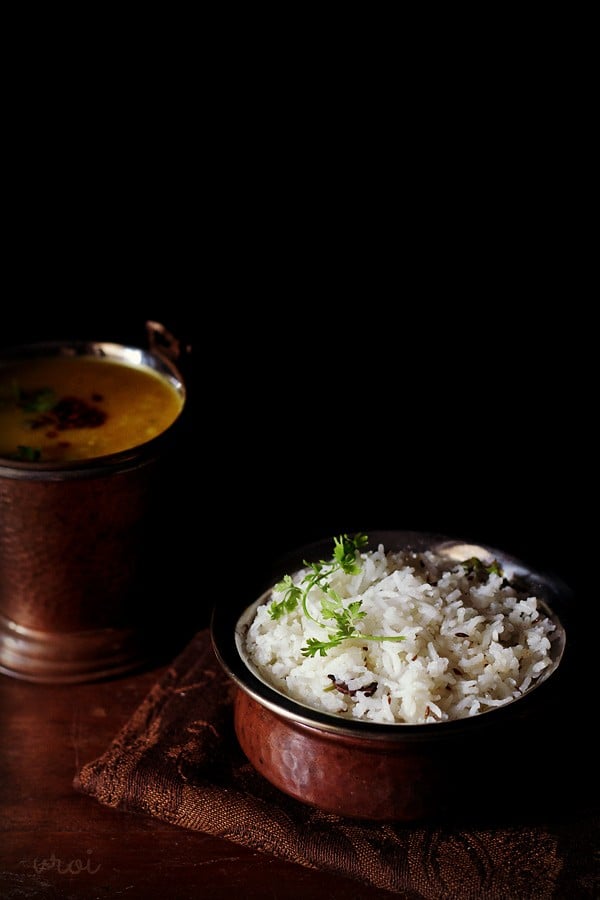
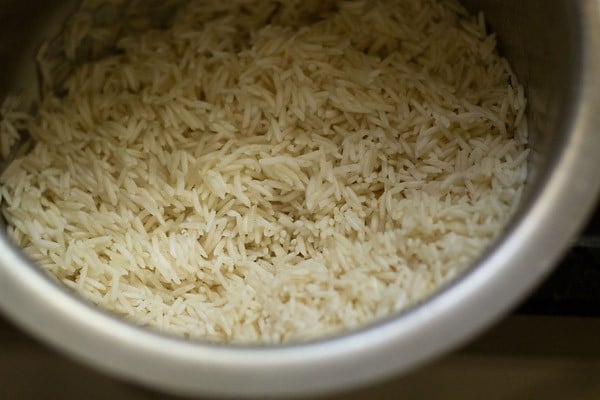
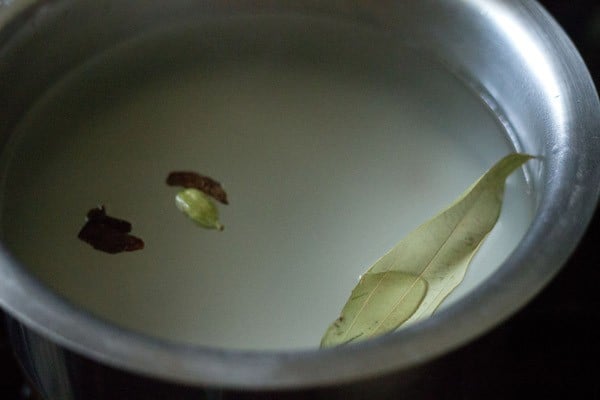
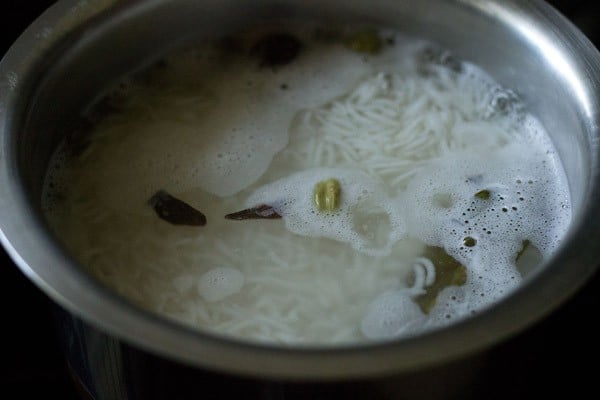
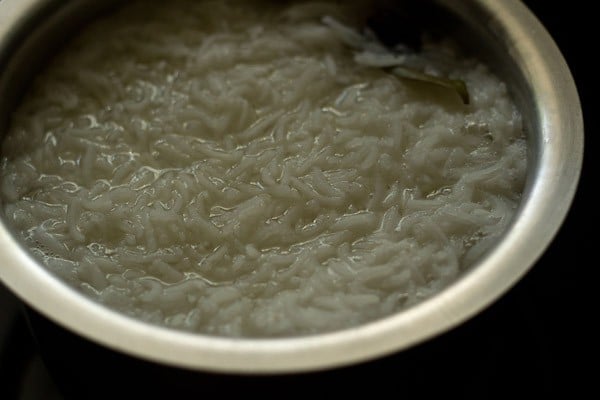

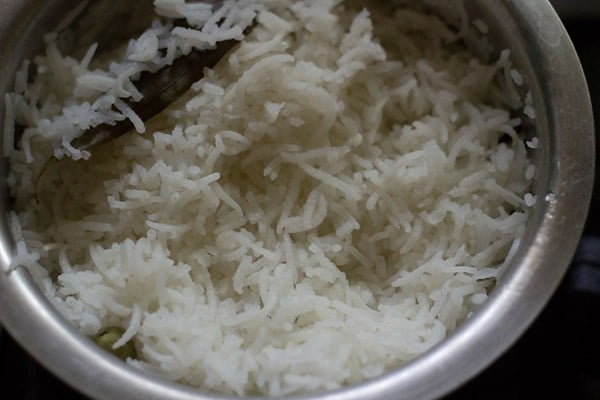
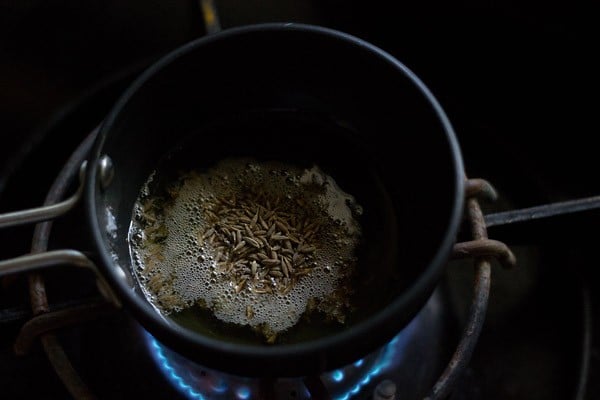
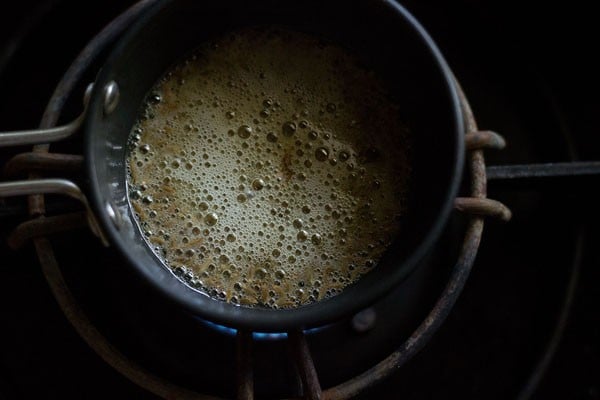

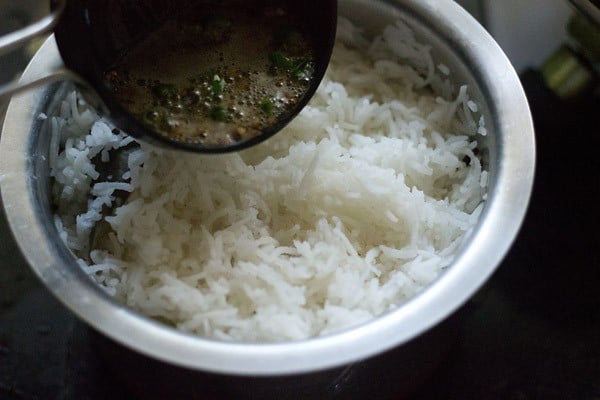
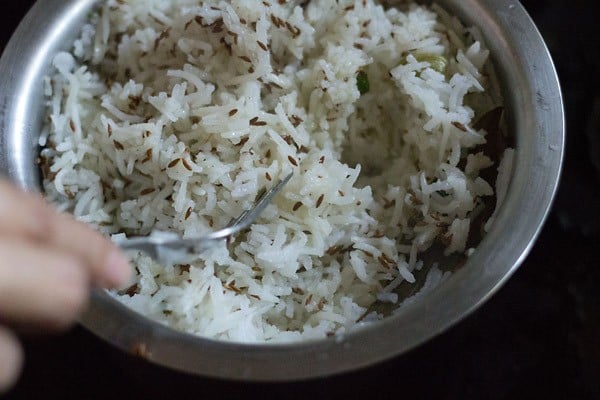
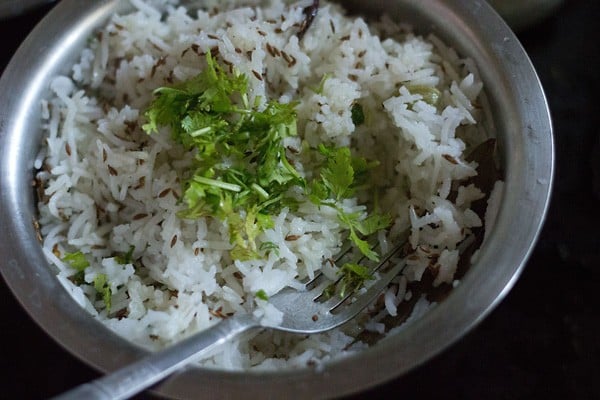
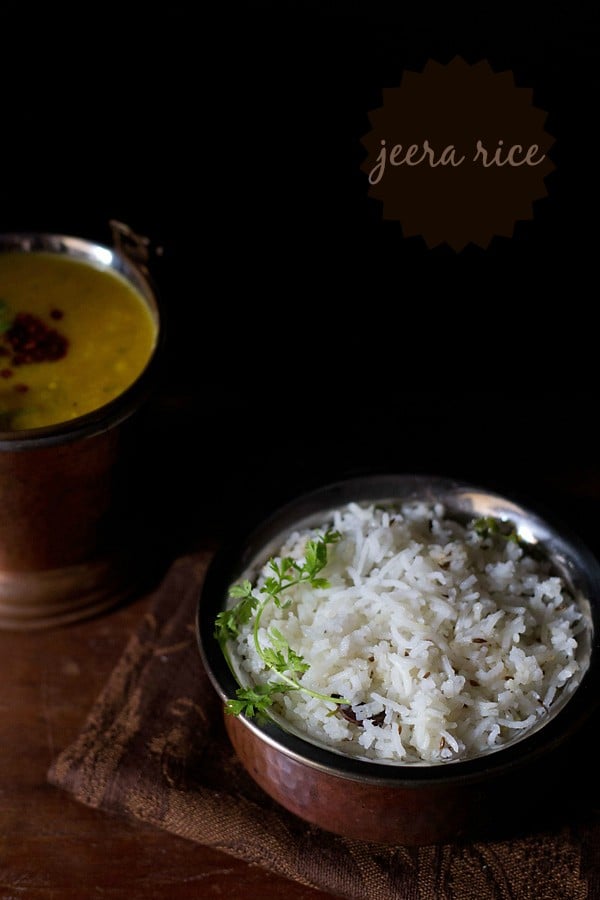
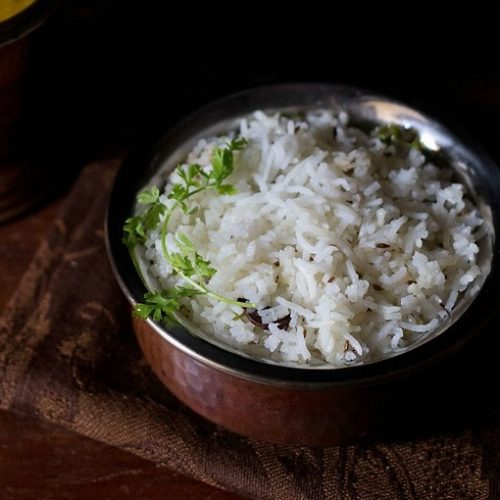
title: “Jeera Rice Cumin Rice Restaurant Style Recipe " ShowToc: true date: “2024-09-17” author: “Ann Jackson”
What is Jeera Rice
What you may know as cumin seeds are also known as jeera in Hindi. That’s how this famous rice dish gets its name! Whether you call it jeera rice or cumin rice, this is an aromatic rice dish which is lightly spiced with fragrant spices and has the earthy flavors of cumin. Jeera rice is also one of the most popular Indian restaurant dishes; many people prefer to have jeera rice instead of plain basmati to go along with dals or curry dishes. The tempering of cumin and fragrant whole spices takes the simple rice dish to a whole new level. Making jeera rice is easy! It tastes special enough for treasured guests, but is easy enough for weeknight cooking. Learn how to make this traditional Indian side dish immediately – your everyday meals will thank you!
About Cumin Rice Recipe
This jeera rice recipe tastes like it came from your favorite restaurant; it is mildly spiced, fragrant and tastes too good with the earthy flavor of cumin and warming whole spices. In this method, the rice grains are cooked first with whole spices. Then a tadka of tempered cumin and green chillies is added to the cooked rice and mixed. This method of making jeera rice is used in most restaurants. Optionally, the rice can be cooked with some saffron strands to add some color and warming flavor. This method is also useful if you have some leftover cooked rice that you want to dress up. If using leftover cooked rice, simply scale the ingredients accordingly depending upon the quantity of rice.
How to make Jeera Rice
Cook Rice
- Rinse 1 cup basmati rice under cool water till the water runs clear of starch. Then soak the rice for 20 to 30 minutes in enough water to cover the grains. Drain all the water and keep the soaked rice aside.
- Heat 4 cups water and bring it to a boil. Add all the whole spices listed below:
1 tej patta (Indian bay leaf) 2 green cardamoms1 black cardamom½ inch cinnamon2 cloves1 to 2 single strands of mace
- Add the soaked rice and 1 teaspoon salt, or add salt according to your taste. Simmer the rice, uncovered, on a low heat. Also, check the taste of the water; it should taste a bit salty.
- The rice grains should be cooked till tender and yet separate.
- The texture of the cooked rice grains is shown in the below picture. I usually cook rice grains a bit more softer than what is served in restaurants. The reason being that if the rice grains have even some bite to them, then they cause indigestion problems.
- Using a colander or strainer, drain the water and keep the cooked rice aside until it becomes warm or cools completely. If you want, you can rinse also the rice with water at room temperature. This stops the further cooking of the rice and keeps the grains separate. Rinsing with water brings down the hot temperature of the rice and the rice cools faster. Before we add the tempering mixture to the rice, the rice has to be at room temperature.
Temper Jeera Rice
- When the rice grains are warm or cooled completely, we can start with the tempering. Note that mixing the tempering mixture in hot rice may break the soft, tender grains while stirring. Heat 2 tablespoons oil or 1.5 tablespoons ghee in a small pan on a medium-low or medium heat. Add 2 teaspoons cumin seeds (jeera).
- Let them crackle. They have to be fried well otherwise you will taste uncooked cumin in the rice.
- Add ½ teaspoon chopped green chilli. Stir for a few seconds. No need to brown the chillies. You can omit adding the green chillies if you prefer.
- Add the tempering to the rice.
- With a fork, gently mix the tempering with the rice grains. Even if a few rice grains break, it is alright. Do gently taking care so as not to break the rice grains.
- Add 1 tablespoon chopped coriander leaves and gently mix or garnish with coriander at the time of serving. Serve Jeera Rice with gravy dishes like paneer butter masala, kadai mushroom or even any dal like chana dal or dal palak. Jeera rice can be served with dals (lentils), North Indian curries and gravy dishes. Enjoy!
Expert Tips
- Quality of basmati rice – To get perfectly fluffy, non-sticky jeera rice or pulao, you need high quality basmati rice. Each grain should expand and fluff up after cooking and yet remain separate. Aged basmati works very well for this purpose, or opt for parboiled basmati rice (sella basmati chawal) which also gives excellent results.
- Soaking rice – As a practice, you should soak the rice for a minimum of 20 minutes to a maximum of 30 minutes. Soaking rice ensures that the grains expand and cook evenly. Soaked rice grains require less water on the stovetop, thereby reducing the cooking time as well.
- Rinsing rice – I recommend you get in the habit of rinsing your rice before cooking. Rinsing removes some starch from the grains, which prevents them from sticking after cooking. Continue to rinse several times, until the water is clear of starch.
- Rice to water ratio – The rice to water ratio always depends on the quality of rice that is used. Usually, I have found that organic basmati rice requires more water to cook than regular basmati rice. Trust your cooking experience when boiling rice, but the rice to water ratios are roughly:
1:2 for soaked rice to water in a pot on the stovetop. 1:2-2.5 for unsoaked rice to water in a pot on the stovetop.Rice to water ratio in a pressure cooker – 1:1.5 or 1.75
- Stirring rice – If you need to stir the rice grains while cooking, then be sure to use a fork and not a spoon. A spoon will break more grains than a fork. Also, keep any stirring to a minimum to prevent as much breakage as possible.
- Frying the jeera (cumin) and spices – The cumin seeds and the whole spices have to crackle and smell aromatic before you proceed further. To get proper browning and crackling, the oil/ghee has to be medium hot when you add the spices. As soon as you add the spices, they will crackle and release their essential oils. At this point, work quickly to proceed to the next step in the recipe. Also, remember not to burn the spices.
- My Secret Ingredient – One spice which I never miss adding to my jeera rice is mace (javitri). Mace gives a unique flavor and fragrance, so make sure to add this aromatic spice. Since mace is quite potent, use sparingly; just one or two strands are enough for one cup of raw rice. Few more rice recipes for you !
Ghee Rice – an aromatic and delicious rice dish made with ghee and spices from the South Indian cuisine.Nei Choru – aromatic savory rice dish made with rice, ghee, nuts, raisins and spices from the Kerala cuisine.Biryani Rice – a light, aromatic rice dish which is easy to prepare and goes very well with any rich vegetarian curry or dal.Pulao – aromatic and delicious one pot rice preparation of a pilaf made with various mix vegetables.
Please be sure to rate the recipe in the recipe card or leave a comment below if you have made it. For more vegetarian inspirations, Sign Up for my emails or follow me on Instagram, Youtube, Facebook, Pinterest or Twitter. This Jeera Rice recipe from the blog archives first published in July 2014 has been updated and republished on December 2022.














